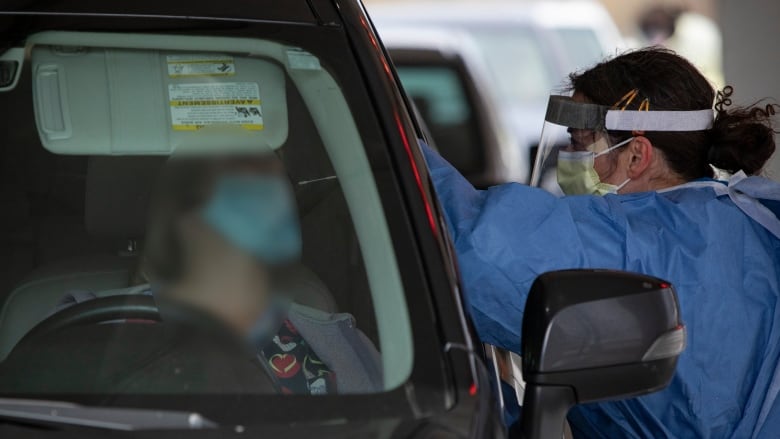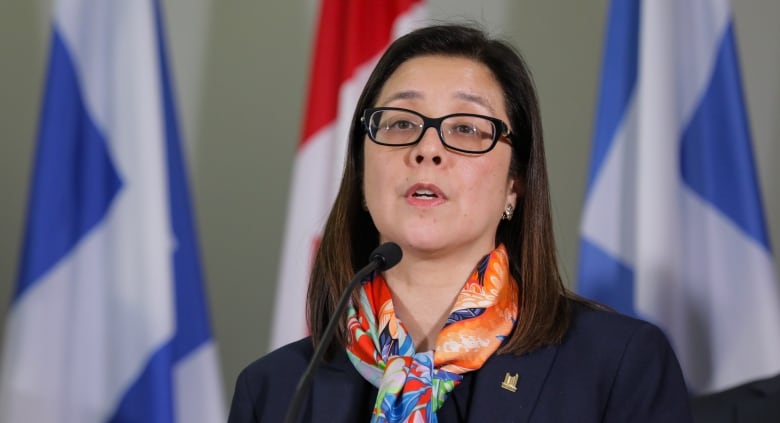COVID-19 affecting certain groups in Toronto more than others, preliminary data suggests
469 people now dead of COVID-19 in Toronto, city says

Preliminary data suggests that COVID-19 is affecting some socio-economic groups in Toronto more than others, the city's medical officer of health reported on Tuesday.
Dr. Eileen de Villa told reporters at a daily news briefing that Toronto residentsin areas where there is a greater proportion of low-income earners, recent immigrants and high unemployment rates are registering higher rates ofinfections and hospitalizations than peoplein other areas.
Data was analyzed by small geographic areas and not at the individual level, she added.
"These preliminary findings suggest that COVID-19 might be disproportionately affecting certain people in our city. But it is difficult to get a complete picture using area level data," De Villa said.
"To strengthen our capacity to address this issue, my team is adding socio-demographic questions to our case management process."
De Villa said people who test positivewill soon be asked socio-demographic questions about their race, income status, household size, Indigenous identity and First Nation status.
Toronto Public Health (TPH) will ask these questions in the near future to give staff moreinformation about trends,insight into how the disease is affecting the city, and data to inform its prevention strategybetter, de Villa said.
TPH needs to make changes to its database to capture the information, she added.
As part of her update, De Villa presented the latest numbers on the outbreak in Toronto, saying 469 people in the city have died of the virus.
A total of 394 people are in hospital, with 105 people in intensive care units. A total of 4,137 people have recovered from COVID-19 in Toronto.
The city has a cumulative total of 6,448 cases, 5,809 of which are confirmed and 639 of which are probable, De Villa said.
De Villa noted that other jurisdictions, including B.C., have begun to ease restrictions but Toronto is not yet in a position to do so. B.C. experienced the peak period in its curve of infections a month before Toronto did, she noted.
There needs to a steady drop in the number of cases and hospital admissions reported each day in the city before changes can be made, she said.
"Unfortunately, we are not quite there yet," she said.
She added that Toronto residents are urged to continuephysical distancing and staying at home as the pandemic continues.

"We need to ensure that we do not undo the progress we have made with our physical distancing measures," she said.
"When we start to see our local COVID-19 infections and hospital admissions declining we can start to ease our restrictions and slowly begin to reopen our city. However, physical distancing will continue to be part of our lives for the foreseeable future."
City supportingbuilding industryduring pandemic
Mayor John Tory and Toronto Fire Chief Matthew Pegg, head of the city's emergency response team, also spokeat the news conference.
Tory said, through the use of technology, the city has supported the building industry during the pandemic to keep the construction of housing going because the city continues to face housing challenges. Services have been offered online, he said.
Between March 16 and May 1, the city has provided development approvals for more than 6,600 housing units, issued close to 2,200 building permits with a construction value of more than $900 million, conducted final construction inspections and provided occupancy permits for more than 2,000 new housing and commercial units across the city.
"These numbers reflect a strategic approach to making sure that city business continues to get done," Tory said.

The city has embraced technology to keep important projects moving forward, he said. An example is the organizing of a May 13 virtual community consultationabout a Housing Now project at 705Warden Avenue. Another example is having pre-application development meetings through web conferences.
Tory said the city is doing business online in new ways.
"This is something that we were pushing for and it is something we've done even faster now because of the pandemic and I fully expect, as i believe residents and businesses expect, that we will keep this modernizing going as we move into the recovery period."
Mount Pleasant cemeteries making plans to reopen
Tory added that the Mount Pleasant Group, which operates 10cemeteriesin Toronto, is consideringreopening the day before and the day after Mother's Day. He said it means people can visit the graves of loved ones in the cemeteriesclose to Mother's Day, but public safety has to come first.
"It's a further sign that we are moving forward," Tory said.
People will still need to keep their distance at the cemeteries, he added.
As for the Bloom Cam, the livestream of cherry blossoms in full bloom in High Park, Tory said it has been viewed more than 125,000 times by more than 57,000 unique viewers. High Park remains closed during the peak bloom period, but Tory said he hopes it will reopen as soon as possible.
People have watched more than 17,792 hours of Bloom Cam footage and 94 per cent of viewers have indicated that they liked the livestream. Tory added that the city ran two livestream events on Sunday on Instagram and YouTube.

City seeing increased demand for PPE
Pegg, for his part, said the city's inventory of personal protective equipment is stable, but the city is seeing increased "PPE consumption rates"in its paramedic services and long-term care homes.
"This is as a result of increased demand and in response to some recent protocol changes relating to the use of both N95 respirators and face shields." he said
The city now has 45,000 face shields into its inventory and more are on order, he added.
Pegg said the city's PPE inventory levels, based on current consumption rates, are as follows:
- 19 daysof supply of N-95 respirators.
- 509 dayssupply of surgical masks.
- 264 days of supply of isolation gowns.
- 20 daysof supply of face shields.
"The city is continuing to source and manage PPE in support of our continuing response to COVID-19." Pegg said.












_(720p).jpg)


 OFFICIAL HD MUSIC VIDEO.jpg)
.jpg)



























































































